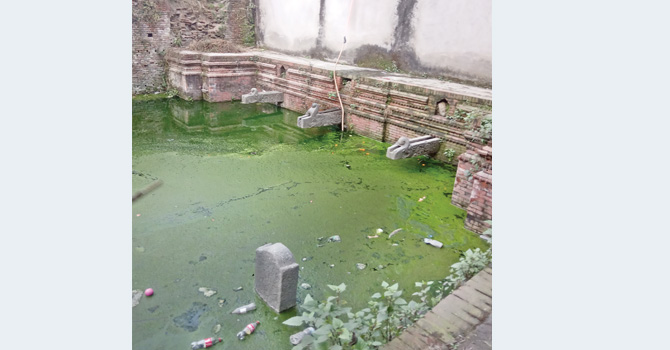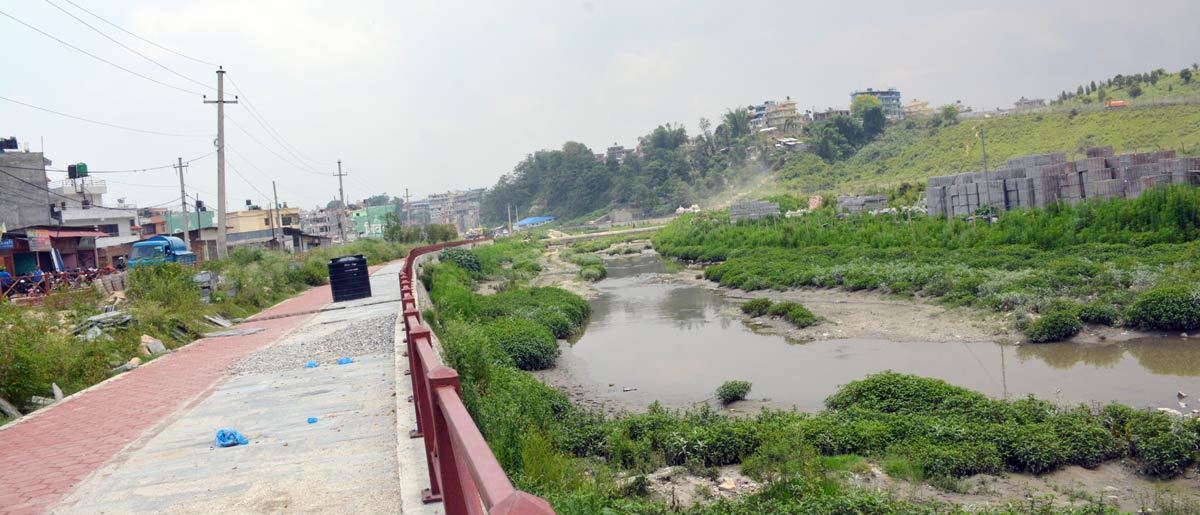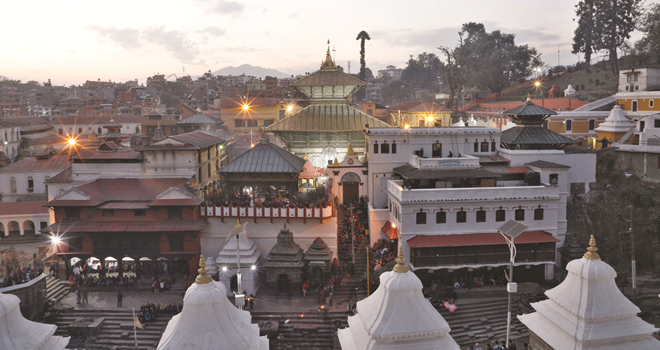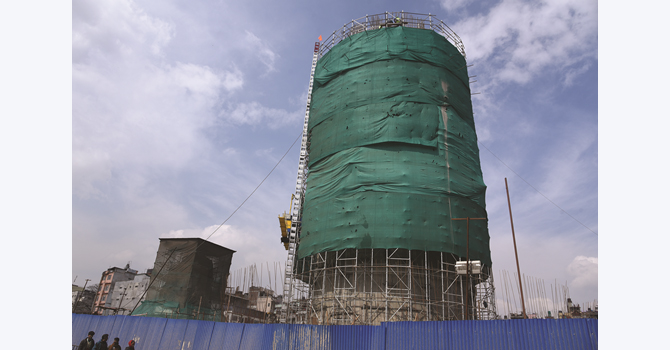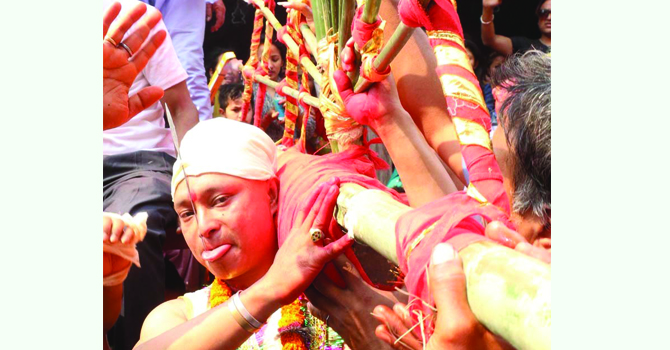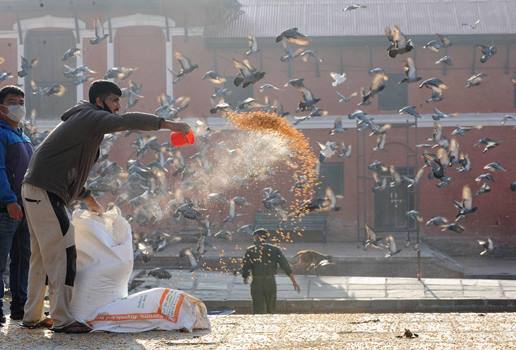Relevant bodies have no record of stolen Taleju necklace
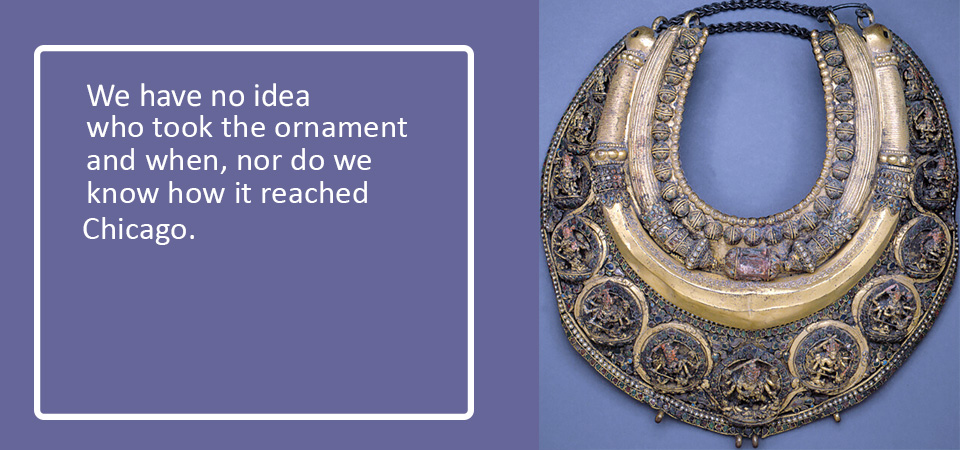
By Binu Shrestha
Kathmandu, June 24: Over hundreds of years, foreign travellers, business and religious preachers took possession of countless cultural objects from Nepal. But we don’t know exactly how many were taken and by whom because no records of artefacts exist from before 1952 when the Department of Archaeology (DoA) was established to protect, preserve, restore, excavate and study the cultural artefacts of the country. Over the past year, many Nepali statues and objet d’art have been discovered in many collections and galleries in the western countries. Recently, the necklace belonging to Taleju Bhawani of Hanumandhoka was found on display at the Art Institute of Chicago, United States.
The bodies responsible to protect the religious and cultural objects of Hanumandhoka Durbar Square – the Hanumandhoka Museum Development Committee, the DoA and the Guthi Sansthan – have no records of the original ornaments of Taleju, including the necklace. However, the plaque put up by the Art Institute on their display suggests that the necklace was offered to the goddess by Pratap Malla in 1643.
Sandeep Khanal, executive director of Hanumandhoka Durbar Museum Development Committee, claimed that the Guthi Sansthan was the main body responsible for maintaining records of the gods and goddesses and their associated property in the nation.
“We have no idea who took the ornament and when, nor do we know how it reached Chicago,” Khanal said.
Sarita Subedi, archeological officer at the DoA, said that the Department could not find any documentation relating to the necklace at the Guthi Sansthan’s central records department in Bhadrakali.
“According to the priest, the authorities of the time took several objects out of the Taleju Temple in 1970 for safekeeping. This was what he was told by his father. But nobody knows where the objects were taken to and that is the issue,” Subedi said.
The DoA stated that it was working to repatriate the necklace. It is also trying to bring back five 600-year-old statues of Patan which were recently put up for auction by the Bonhams House. The five statues are from a set of 12 gilded bronze idols which were wrenched out and stolen from the Toran of Patan’s Taleju Bhawani Temple in the 1970s.
Sanjaya Adhikari, a heritage activist and lawyer, told The Rising Nepal that they were pursuing diplomatic channels to repatriate the holy relics on the basis of the
1970 UNESCO Convention on the Means of Prohibiting and Preventing the Illicit Import, Export and Transfer of Ownership of Cultural Property. The DoA, the Kathmandu office of the United Nations Educational, Scientific and Cultural Organisation (UNESCO), the Ministry of Foreign Affairs, the Ministry of Culture, Tourism and Civil Aviation and the relevant Embassy of Nepal have begun the process to bring the necklace and the idols home, he said.
Adhikari said that the return of the 800-year-old Laxmi Narayan statue in April by the Dallas Museum of Art had set a positive precedent.
Many countries across the world are dealing with theft and illegal trade of their antiques, and Nepal is one of them. Several religiously and culturally important artefacts were stolen and smuggled out of the country in various periods and are now in private collections or in foreign museums.
After the unification of Nepal, William Kirkpatrick is believed to be the first person who took away many Nepali cultural relics.
He took many icons, coins, manuscripts and artworks when he was in Nepal to survey Tibet. These are presently with the collection of the British Museum.
Brian Hodgson also collected many manuscripts from all over Nepal and later donated them to museums, libraries and societies in different countries.
Recent News

Do not make expressions casting dout on election: EC
14 Apr, 2022
CM Bhatta says may New Year 2079 BS inspire positive thinking
14 Apr, 2022
Three new cases, 44 recoveries in 24 hours
14 Apr, 2022
689 climbers of 84 teams so far acquire permits for climbing various peaks this spring season
14 Apr, 2022
How the rising cost of living crisis is impacting Nepal
14 Apr, 2022
US military confirms an interstellar meteor collided with Earth
14 Apr, 2022
Valneva Covid vaccine approved for use in UK
14 Apr, 2022
Chair Prachanda highlights need of unity among Maoist, Communist forces
14 Apr, 2022
Ranbir Kapoor and Alia Bhatt: Bollywood toasts star couple on wedding
14 Apr, 2022
President Bhandari confers decorations (Photo Feature)
14 Apr, 2022


